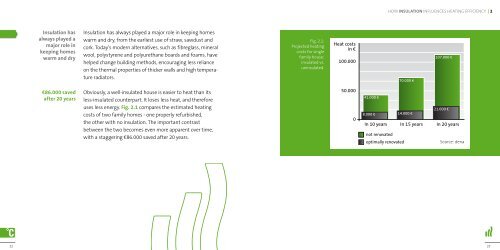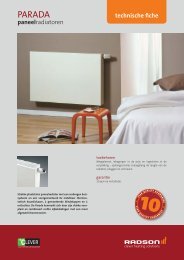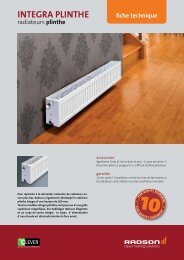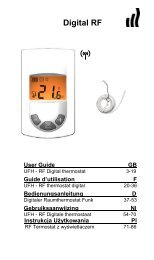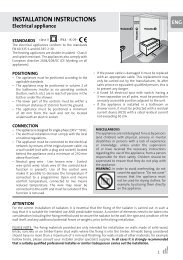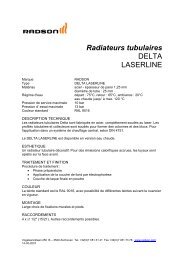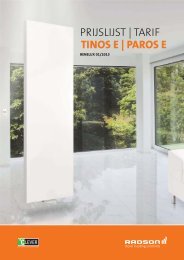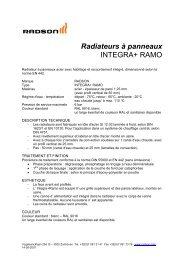Download - Purmo Radson
Download - Purmo Radson
Download - Purmo Radson
Create successful ePaper yourself
Turn your PDF publications into a flip-book with our unique Google optimized e-Paper software.
HOW INSULATION INFLUENCES HEATING EFFICIENCY | 2<br />
Insulation has<br />
always played a<br />
major role in<br />
keeping homes<br />
warm and dry<br />
Insulation has always played a major role in keeping homes<br />
warm and dry, from the earliest use of straw, sawdust and<br />
cork. Today’s modern alternatives, such as fibreglass, mineral<br />
wool, polystyrene and polyurethane boards and foams, have<br />
helped change building methods, encouraging less reliance<br />
on the thermal properties of thicker walls and high temperature<br />
radiators.<br />
Fig. 2.1:<br />
Projected heating<br />
costs for single<br />
family house:<br />
insulated vs.<br />
uninsulated.<br />
Heat costs<br />
in €<br />
100.000<br />
70.000 €<br />
107.000 €<br />
€86.000 saved<br />
after 20 years<br />
Obviously, a well-insulated house is easier to heat than its<br />
less-insulated counterpart. It loses less heat, and therefore<br />
uses less energy. Fig. 2.1 compares the estimated heating<br />
costs of two family homes - one properly refurbished,<br />
the other with no insulation. The important contrast<br />
between the two becomes even more apparent over time,<br />
with a staggering €86.000 saved after 20 years.<br />
50.000<br />
0<br />
41.000 €<br />
21.000 €<br />
8.000 €<br />
14.000 €<br />
In 10 years In 15 years In 20 years<br />
not renovated<br />
optimally renovated<br />
Source: dena<br />
22<br />
23


